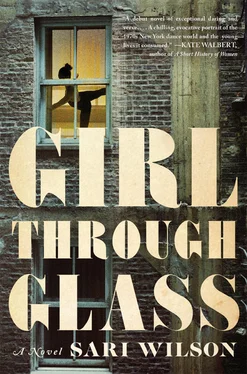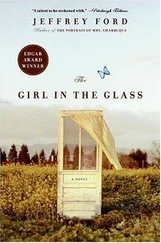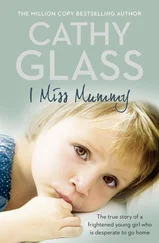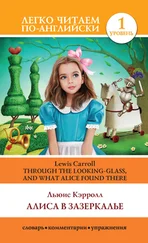A healthy burst of applause. “Thank you,” I say and step to the lectern. The back of the room rises into dimness, but I can see the faces in front.
It’s been a good year since I left Ohio. I have a nice apartment on the East Side. I have a few friends here, too — I’ve never needed many. Felicia, Alain, and Kevin, sort of. The beginning of something. Kevin and I have seen each other a half dozen times since I moved here. We seem to enjoy each other’s company, which is a strange thing to say of one’s son. But there it is.
An essay on Nijinska, “Modernism’s Midwife,” will be coming out in a few months. I seem to have found something in the administrative part of my residency, and there’s talk of hiring me as a program director next year. Bernie was kind enough to give me a good recommendation (since this position includes no teaching). I’m starting to be in demand as a speaker. The extra income from the speaker’s fees is what has allowed me to buy the shoes I’m wearing tonight, a gorgeous pair of red Manolo Blahniks. I have even been choreographing original work again, for the first time in years. I’m working on a group piece. I’ve found three young dancers and am renting a studio in Bushwick for our rehearsals.
Sioban withdrew her complaint before it was heard for review. I’ll never know exactly why, but I do know that she started seeing a counselor at student services. We met once to discuss her “No Credit” in my class. She sat across from me and swiveled her body this way and that. She looked at me with her intense face, as if she were searching for something. I tried to hold my ground. She gave me a grimace that I realized was meant to be a smile. “I have abandonment issues,” she said. She gathered her hair into a tighter ponytail. She had her sober scientist-student face on, pale except for her excitable acne scars. “But you left, and I didn’t die .” She makes her grimace-smile again. “That’s progress.”
Yes, I thought, you didn’t die . I wanted to say thank you to her but I couldn’t. It was impossible. Still, I thanked her in my mind. I feel gratitude toward her. I will never forget the press of her long body into mine, and the taste of her, and how our moment together strangely spurred in me some tenderness for myself that I haven’t lost.
I know why now. Why she, of all my students. It was the simplicity of her beautiful unencumbered form bringing me back to the time when the body — my body — was elemental. The world was elemental, too. I moved through it like each step mattered. And maybe because it did to him . To one man. Maurice. That was the gift he gave me.
Now at the lectern, I pick up my clicker and begin my talk: “We all know by now how the Balanchine myth begins — in 1946, Lincoln Kirstein freed George Balanchine from his duties as a choreographer of circus elephants and placed him in charge of the first great American ballet company. This became the New York City Ballet.” A few knowing exclamations, and I say, “I see I’m among friends here. Balanchine has become a legend for modernizing ballet for America. Except for trotting out the party dresses for the annual Nutcracker bonanza (which could fund an entire NYC Ballet season), he eschewed the old stories and dramas. No Giselle . No Swan Lake . He is credited with inventing the ‘Balanchine look’—the pinhead ballerina — hipless girls with long, lean limbs, and skin, as he once famously said, ‘the color of a peeled apple.’ In the Balanchine universe, the ballerina did not think. She became a vessel for his genius. Thus, the master chose his dancers young, driven only by an animal instinct to dance. She appears onstage in a simple unitard, perhaps a few feathers in her hair. She is no princess, no swan lady, she is simply female; she dances. ‘Ballet is woman,’ Balanchine opined. She is a chord on his piano, a drumstick to his drum. Balanchine looked for girls whose servitude to Terpsichore, goddess of dance, made her worthy of worship. But where to find her? And what did she look like? What did that mean for ballet in America?”
I click through my images of Balanchine history — the early years: Tanaquil Le Clercq in Stars and Stripes. When I reach the 1950s and Maria Tallchief, I pause. Look around the room. The faces are interested. I move on to more examples from the middle period of the 1960s, Balanchine’s minimalist leotard-and-tights stage, severe lines and classical myths, his Martha Graham moment. I click to a screen of Suzanne Farrell and Peter Martins, at their most Olympian, in Agon . A few gasps at the extraordinary bodies on view. “But what of the Balanchine body?” I say. “Much has been made of it, but it bears reexamining from a feminist perspective. In Balanchine’s choreography, no longer was the woman pirouetted on the arm of the prince. She stepped forward on her own by embodying her own physical power. It was no longer sublimated.” I switch to the famous photo of Allegra Kent leaping with abandon in Seven Deadly Sins .
“Kirstein wrote, ‘American young girls were not sylphides; they were basketball champions and queens of the tennis court, whose proper domain was athletics. They were long-legged, long-necked, slim-hipped, and capable of endless acrobatic virtuosity. The drum majorettes, the cheerleader of the high-school football team of the thirties filled Balanchine’s eye. . The pathos and suavity of the dying swan, the purity and regal behavior of the elder ballerina, were to be replaced by a raciness and alert celerity which claimed as its own the gaiety of sport and the skills of the champion athlete.’”
I click and the final image comes up — a sixteen-year-old Darci Kistler in class leaping, her colt’s legs flying apart, her wholesome face gleaming. I like to leave this one up on the screen. While I finish out my presentation, I let them drink in her bright exertion. Do they notice her half-lidded eyes, her slack cheeks — the shock that comes with seeing someone so far off the ground looking like they are asleep? She looks as if she were sleepwalking.
I’m nearing the home stretch. This kind of lecturing is not really like teaching — it’s more like the performances of the old days — the warm lights, and the knowing darkness and intimacies of anonymous faces in the audience.
The applause splits the silence — it feels real, enthusiastic.
Next is the Q&A. They raise the lights, and a microphone is brought into the aisle. The curator of the Balanchine archives asks a question about the images, a graduate student asks me to clarify a point from my book, someone asks a question about dance notation systems that has nothing to do with my talk and doesn’t seem to really have a question in it. Just when I am wondering if anyone really was listening at all, a wisp of a girl steps up to the microphone. She wears her hair long, her feet are splayed duck-like, and she is dressed in cutoff jean shorts and a T-shirt over tights and espadrilles. She’s clearly a bunhead, and I’m amazed that she is here, at my lecture. She has a soft voice. What do you remember about— I have to strain to hear her halting words— being a student at SAB when —here she fades out again— Mr. B was still alive. She says this like a statement, not a question.
It all comes back to me then: this feeling of flying through the air, Mr. B saying: “Don’t think — do!” And the Tchaikovsky music behind us as we flew across the floor, the long narrow lockers and the averted stares of the other girls, the skylights, the cracked and broken pointe shoes, the blisters and calluses, the scent of Mr. B’s ballerinas in the elevator, the feeling of becoming something irrefutable, becoming beautiful, defying life.
Читать дальше











